The #7 Parkour story of the decade is about the transition from old school to new school; from hobby to profession; from community to industry. It’s summed up in the transition we all witnessed that groups of Traceurs took to go from being Parkour teams to being Parkour brands.
Since practically the beginning of Parkour history, Parkour has been done in groups which often took on names and were considered teams. Early on it was the first Parkour crew named Yamakasi, headed by David Belle. Once that group split, the team “La Releve” was formed, then later Belle led a group called “Les Traceurs” from where now the word “Traceur” comes from to define a practitioner of Parkour.
As time progressed, the scope of Parkour teams grew in notoriety and ability, and with the emergence of social media these teams all of a sudden had platforms to show their work. Through this process, a few teams rose to prominence. Then in the 2010’s a few teams found a way to make the jump to the next level.
In the 2010’s teams were able to transition from groups of friends training together to groups of friends running a name-brand business together. For most it started by banding together to pursue commercial work & performance gigs. Through ambition, creativity, and vision it grew from there to developing name clothing brand, shoes, and gyms. It many ways it was one of the most important driving forces in the Parkour industry in the 2010s because it changed the Parkour community at a grassroots level and opened the paradigm from a sport of purity to one that was OK to make a living in.
Looking back on the past 10 years there are five PKFR teams that stand out to me most prominently for making this transition from team to brand. All five of these teams were incredibly inspiring and influential to hundreds of thousands if not, literally, millions of people around the world, and all of these teams deserve a place in Parkour history as helping usher in the change from community to industry,
Note: I don’t feel I know enough about the intricacies of these teams and their histories to do them full justice in a short paragraph. If anyone from any of the teams would like to submit a new draft, I’d love to update the article by swapping it in. You can contact me via the Parkour.com contact page here.

3Run. 3Run was a pioneer in the PKFR world before most people even knew what Parkour was. Although Chase Armitage, Sam Parham and others can give better testament to their story, even a small glimpse into their influence is enough to give you the right impression.
Put it this way – 3Run was so influential in the early part of the PKFR scene that the word “3Run” became a common term used to mean Parkour & Freerunning! And becoming a “3Run Ambassador” (an affiliate / sponsorship of sorts) was a goal of leading Parkour pros around the world.
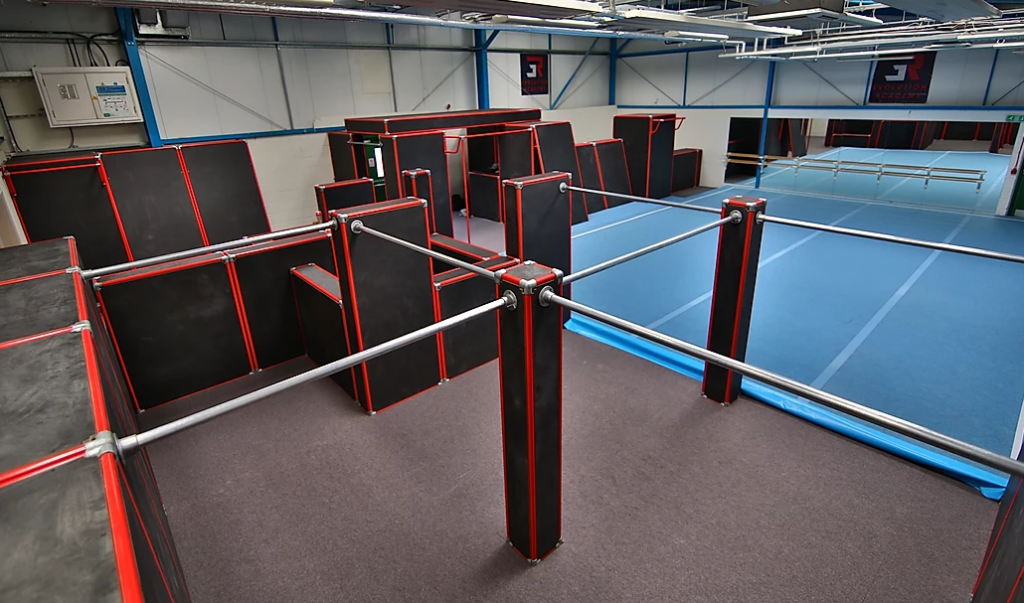
3Run amassed one of the biggest social media followings of any team in the PKFR world; they got into event performance and consulting; they opened a gym; and they launched one of the first PKFR shoes ever designed by a PKFR team. They truly helped blaze the path by pioneering virtually every cornerstone-element of the now-emerged PKFR industry, and they did it before anyone else.
3Run hassince mostly left the clothing space (click here to view their gear page), and they don’t have the same social energy that they used to, but their academy and other endeavors make them still relevant. Wherever the brand goes in the future, there’s no doubt that they earned their place in Parkour history for pioneering the transition from team to brand.
- 3run.co.uk
- 3runshop.com
- 3run.co.uk/academy
- Facebook.com/3RUNTEAM
- YouTube.com/3runtube
- Twitter.com/3run_official

Storm Freerun. Storm Freerun exploded onto the scene in 2010 when one of the world’s most prominent Traceurs at the time (Tim Shieff) founded the team in England. When “Storm Freerun – Volume 1” launched in March 2010, the video went viral, and the team has never since ceased to be highly respected, admired, and followed.
The team originally consisted of 5 members including Tim “Livewire” Shieff, Paul “Blue” Joseph, Ashley “Spyder” Holland, Jan Barcikowski, and Franck “Cali” Nelle. With the team later being joined by Phil Doyle and Kie WIllis, the team was just about as talented as any Parkour team ever assembled. The team had resonance, and they became so popular that even well known Traceurs who weren’t affiliated with the brand would often position their arms at the end of lines to mimic the logo design. Presently Storm Freerun has one of the largest followings in the PKFR world including 207,000 followers on Instagram and 261,000 subscribers on YouTube.
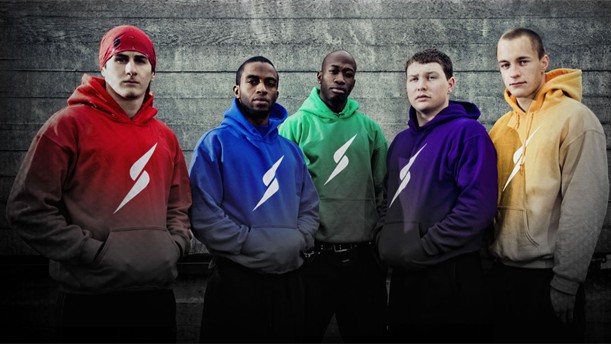
The team made their jump to brand status pretty soon after their launch. By 2011 they were already making hoodies, tees, beanies and more, and their online store is still going strong as they now have arguably the widest range of clothing products in the PKFR scene (they even make denim and ponchos).
Storm Freerun remains popular today because their media has some of the highest production value of any team in the PKFR world, and the team has added some of the world’s most respected pros to their lineup including Joseph Hendo, Tim Champion, Lynn Jung, Ed Scott, and others. The brand is in good hands. Expect great things to come from Storm in the 2020s.
- StormFreerun.com
- Instagram.com/stormfreerun
- YouTube.com/user/stormfreerun
- Facebook.com/stormfreerunning

Team Farang. The only way anyone on the planet doesn’t know who Team Farang is, is if they don’t do Parkour or Freerunning. In what is now seen as arguably the most powerful group of founding PKFR athletes to ever start a Parkour team, Team Farang exploded onto the scene in 2011 when they launched their first YouTube video titled “The City.”
This first video featured 8 Traceurs, but the team would soon crystalize to 4 core members – Jason Paul, Pasha Petkuns, Shaun Wood, and Anan Anwar. In the years to come Farang would generate a fandom that perhaps to this day is only rivaled by one other team. And brand-wise? They launched an original Farang t-shirt that has since grown into a unique style of clothing unlike any other in the Parkour world.
In 2018 they made one more jump that only a few teams were able to make in the 2010’s – they launched a Parkour & Freerunning shoe which they dubbed the Farang ELEVATE.
From day 1 the Farang engagement and following has been well deserved in response to their world class photo and video content, humor, and a unique style. Their now 6 member has the biggest combined individual Instagram followings of any PKFR team in the world, and I expect they’ll keep making waves in the years to come.
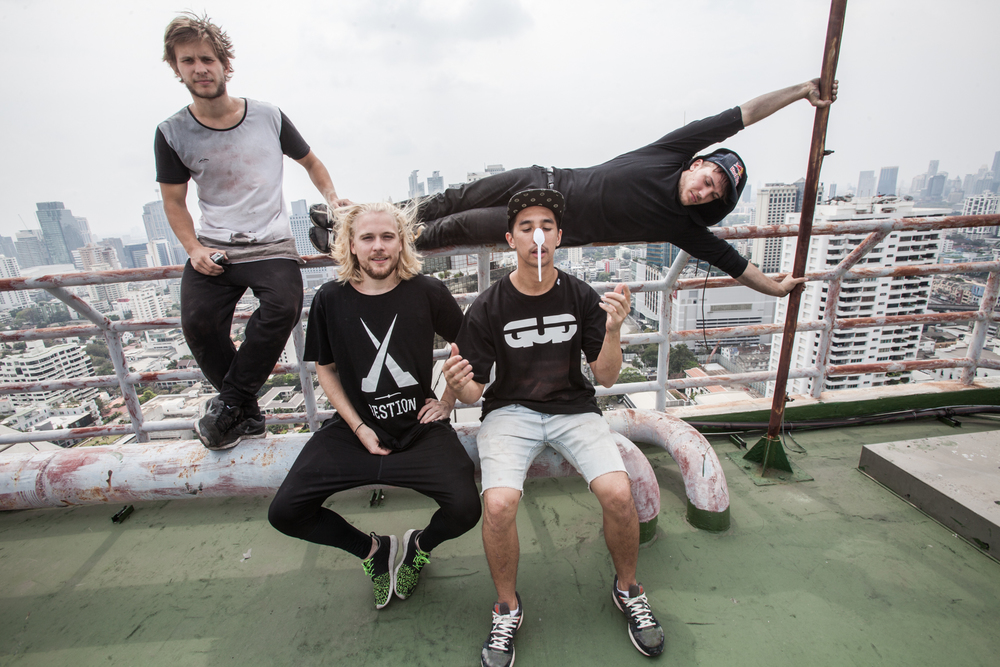

Team Tempest. Team Tempest (also known as Tempest Freerunning) started in the mid-2000s as an L.A. (USA) based stunt team. Founded by Paul Darnell, the 4 original athletes of Tempest (Paul, Victor Lopez, Rich King, and Gabe Nunez) pursued stunt work until their success led them to expand and bring on other athletes.
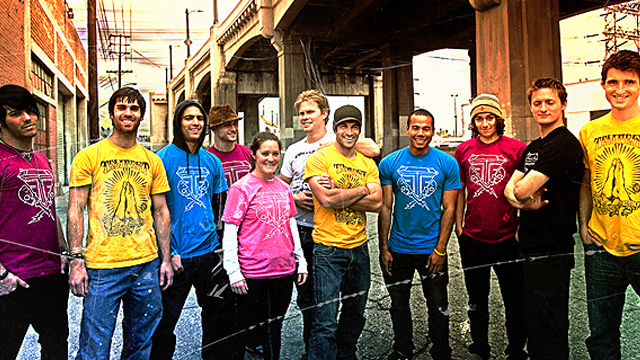
The team found strong success in commercial work and clothing, and then in 2011 they took things to a level that no team had made before – they launched a Freerunning academy. Their launch video went super-viral and played all around the world. I heard it was even played on the jumbo screen of an LA Dodgers baseball game or something. As of today it has racked up 7.8 million views.
Soon after the launch of the gym, Tesmpest hosted the first ever “Tempest Pro Takeover,” event where they brought in literally the best PKFR pros around around the world (it was the event of the year, no doubt), and soon after that they launched their first Parkour & Freerunning shoe.
Tempest is now one of the biggest commercial forces in the Parkour world boasting 4 gyms in the USA (and frankly they might be the 4 most amazing gyms in the country). The sky is pretty much the limit for Tempest moving ahead. There are some missing details that I don’t know including the founder, Paul Darnell, leaving the company. I’m hoping one day Paul will make a documentary on the history of Tempest, because the team is one of the most historic success stories in PKFR history.
- TempestFreerunning.com
- TempestAcademy.com
- YouTube.com/user/tempestfreerunning
- Instagram.com/tempestfreerunning
- Twitter.com/teamtempest
- Facebook.com/tempestfreerunning
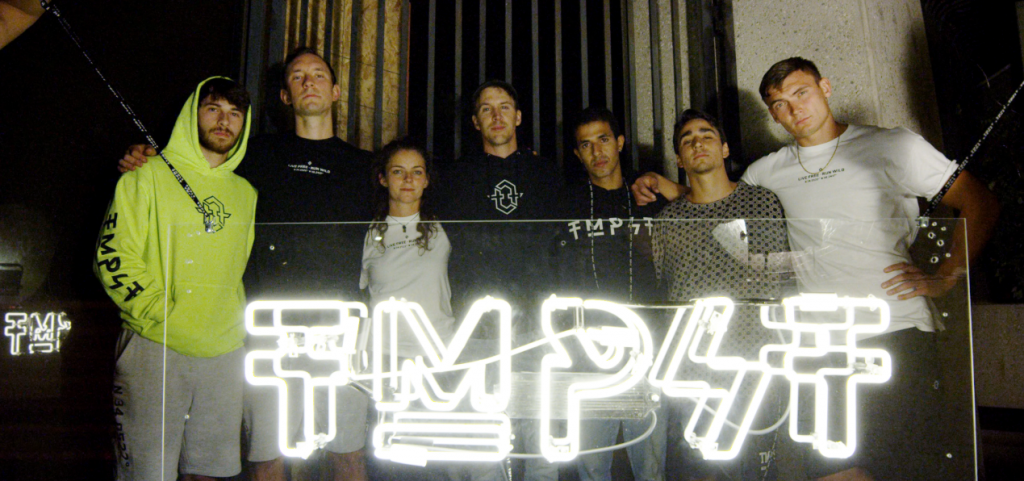

Storror. Storror is a Storror does. Launched on 10 / 10 / 10 (October 10, 2010) Storror was more or less a rag tag group of Traceurs… until they weren’t. Founded with 7 members that, per my knowledge, are still the only ones that make up the team, it has been through passion, vision, intensity, and an incredibly ability to tell stories that they have, in my opinion, transcended the Parkour game more than any other.
With more than 5,490,000 subscribers on YouTube and 779,000 followers on Instagram Storror has literally millions of non-Traceurs around the world that frequently watch their videos. They have been a part of big advertising campaigns, they did stunt work for the newest Michael Bay film “6 Underground”, and in the step that solidified their move to brand status they launched their own Parkour shoe in 2017. Did I mention their films “Supertramps” and “Roofculture”? The accolades of Storror are so extensive that I’m sure I’m missing some big ones.
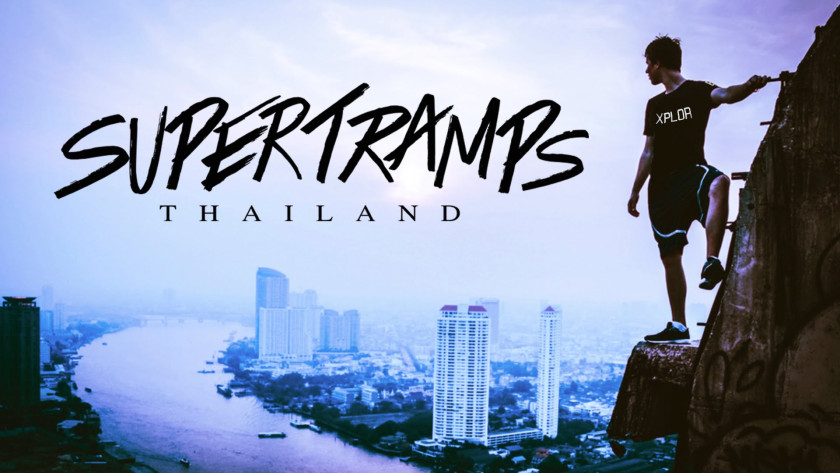
From marketing, to clothing, to films, to shoes, to an international following numbering in the millions, to Hollywood, I think there is an argument that Storror has done more than any other team to bring Parkour into the hearts and minds of people around the world.
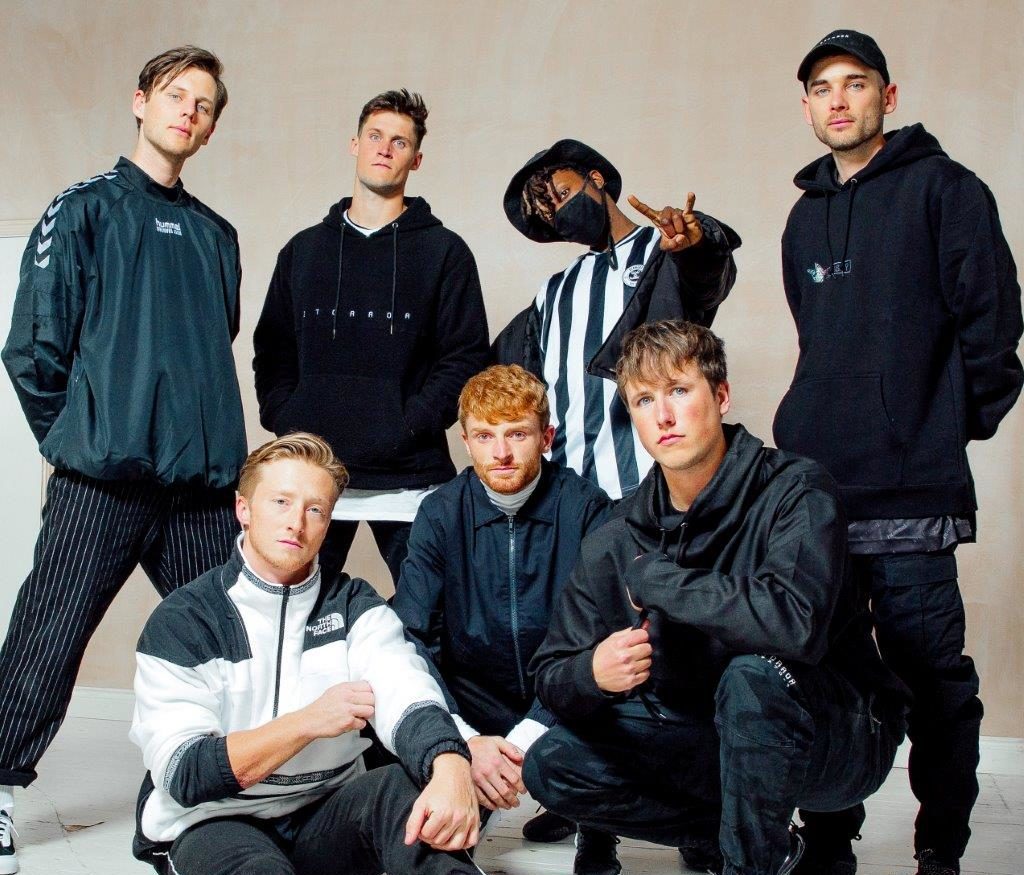
Honorable mentions…
Two teams worth mentioning in this mix that I felt fell right outside the top 5 are GUP from Spain and Jiyo from Denmark.
Heading into the 2010s, GUP might have been the most famous Parkour team in the Parkour world. The team still exists, and they made the brand transition in the 2010s with a really cool line of the clothing. However, they have yet to achieve the commercial success and rabid energy that these other teams have.
Jiyo is a team that started long before 2010, and they are still going strong with a great clothing line up and TWO different PKFR shoes. They even opened a Parkour park! If you don’t know of them, you gotta check them out. An argument can be made that they are one of the top 5 team-to-brand-transitions of the decade.
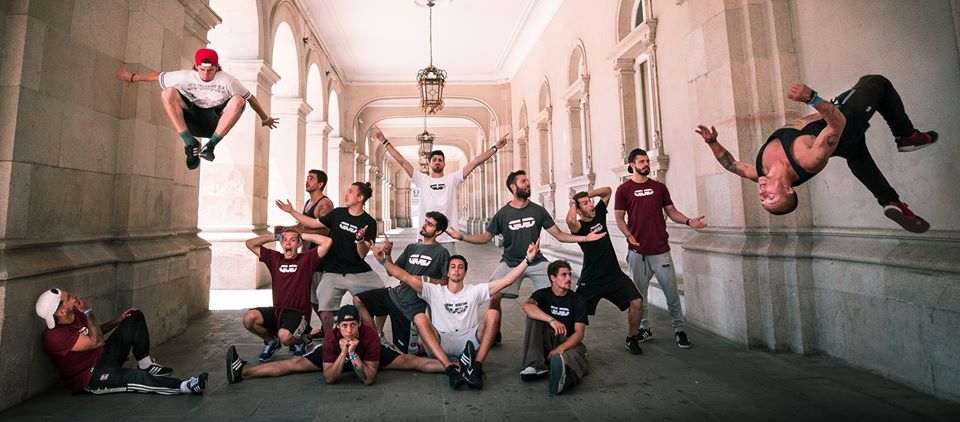
There’s no doubt that we’re just seeing the beginning of Parkour teams transitioning to brands. Although multiple Parkour brands have been launched as brands from the get-go, it was the team-to-brand transition that really epitomized the evolution of the Parkour scene in the 2010s. It’ll be exciting to see where it goes in the 2020s.
What was your favorite Parkour team of the 2010’s? Leave a comment below and let us know!

